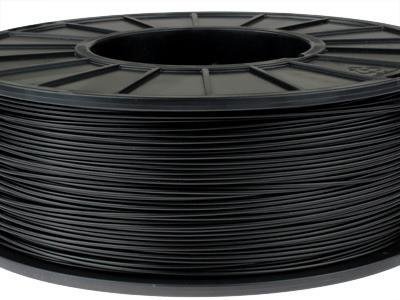Nylon Black Filaments :
Nylon is number one filament when we consider strength, flexibility and durability together. It is hygroscopic, meaning absorbs mositure, so remember to store in a cool or dry place.
Nylon Black Filaments offers a premium material solution for 3D printing enthusiasts seeking durability, versatility, and a sleek finish. Here’s a comprehensive product description:
Material Characteristics:
- Nylon Polymer: Nylon is celebrated for its exceptional strength, flexibility, and chemical resistance, making it a top choice for various industrial applications.
- Deep Black Color: This nylon filament boasts a rich, deep black color that adds a professional touch to your 3D-printed projects.
Key Features Nylon Black:
- Outstanding Strength and Durability: Nylon Black Filament is renowned for its superior mechanical properties, including high tensile strength and impact resistance, ensuring the longevity of your printed parts.
- Flexibility: Nylon filament offers a degree of flexibility, allowing for the creation of parts with dynamic or moving components without sacrificing structural integrity.
- Chemical Resistance: Nylon exhibits resistance to many chemicals, oils, and solvents, making it suitable for applications where , exposure to harsh environments is expected.
- Low Friction Surface: The filament’s smooth surface finish reduces friction, facilitating the smooth movement of parts and minimizing wear and and tear.
Applications Nylon Black:
- Functional Prototypes: Nylon Black Filament is ideal for producing functional prototypes and end-use parts that require strength, durability, and precise mechanical properties.
- Mechanical Components: Its high strength and toughness make it suitable for manufacturing gears, bearings, brackets, and other mechanical components.
- Custom Tools and Fixtures: Nylon filament can be used to create custom tools, jigs, and fixtures for various industrial and DIY projects.
Compatibility:
- Nylon Black Filament is compatible with 3D printers that support nylon materials and have a heated build platform. It typically requires a higher printing temperature compared to standard PLA or ABS filaments.














Reviews
There are no reviews yet.